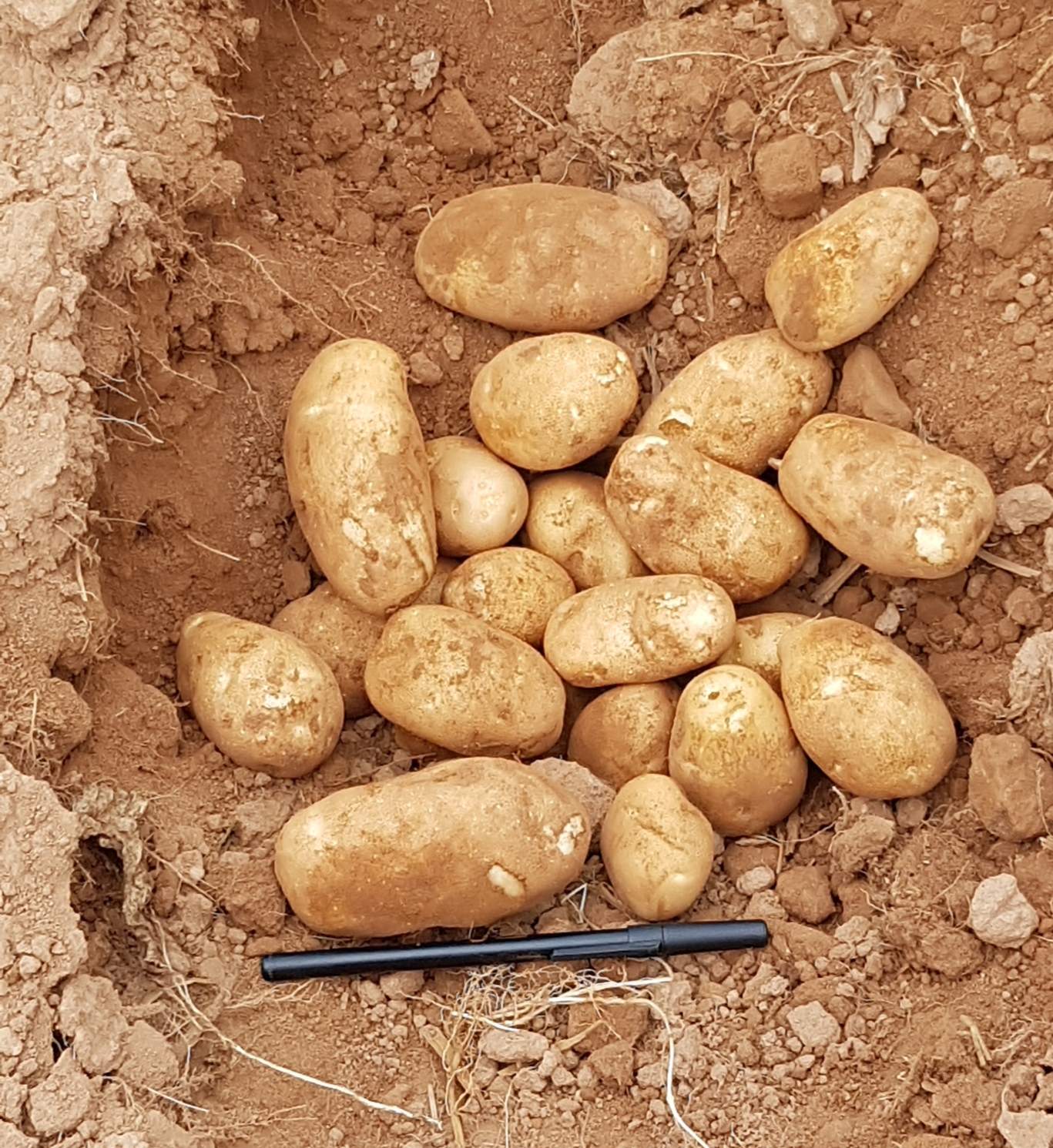
30 Aug Agronomy Updates – Aug 30th
Hi everyone. I think a lot of people are happier this morning following a big rain in the last 24 hours. So far, it sounds like despite some very high totals, there was very little damage from runoff in potato fields, and I haven’t seen much grain laying down on the way to the office this morning. There will be some fields where this rain is too late to do much good, but for the majority of the crop, this rain was incredibly valuable and should set us up for good potential yields, particularly in processing varieties. I’ve heard anecdotally about rain totals over 100 mm in the last 24 hrs, and there were some big totals from Eastern Kings on Monday night up to 80 mm.
Some rainfall totals from PEI Dept of Ag stations:
| Last 24 hrs (mm) |
Since Aug 22 (mm) | |
| Mount Royal | 41.3 | 66.9 |
| Tyne Valley | 41.9 | 60.6 |
| Kensington | 91.4 | 126.0 |
| Tryon | 78.8 | 95.6 |
| New Glasgow | 53.8 | 100.4 |
| Souris | 16.3 | 85.8 |
| Dover | 38.3 | 91.2 |
| Johnston’s River | 25.1 | 59.3 |
In my travels this week, I’m impressed with how good the crop looks in many parts of the Island. Russet Burbanks and other russet varieties generally look the best. In digging some plants in various fields, the tuber set looks to be average to above average and there looks to be enough engine left in healthy plants to add tonnage if we have a good fall. The other pleasing thing is that the Russet Burbanks also look to be much better type than last year, with significantly fewer off-type/sugar end type tubers than last year. Hopefully this big rain won’t result in too much hollow heart or misshapen tubers in susceptible varieties.
Spore Trapping Update:
Late Blight: There have been no late blight spores detected in PEI up to Wed, Aug 28th. This is great news, given the fact that we are headed into the time of year that late blight infection risk is higher with cooler temperatures and more moisture. There have also not been any spores detected in New Brunswick or Maine. There was a report of foliar late blight infection in Norfolk County, Ontario last week. It was destroyed immediately with no reports of spread thus far. The weather next week looks to be mostly dry, reducing the risk of infection. This time of year, when foliage has reached maximum growth, is a good time to consider using longer-acting products that give a longer window of protection late in the season.
Early Blight/Brown Spot: Almost all spore trapping locations reported no spores detected either Monday or Wednesday. Only two locations in East Prince had any Alternaria spores detected this week, and both were in single digits. In speaking with growers, foliar symptoms appear to be minimal outside of Ranger Russets. A couple of growers have shared with me that testing has confirmed brown spot (A. alternata) rather than early blight (A. solani), the same as last year.
Grey mold (Bortrytis): On Friday of last week (Aug 23) there was a significant spike in Bortrytis spores detected, after finding virtually none all summer. This may be due to the rainfall on Thursday in many parts of the Island, particularly western PEI. Spore counts ranged as high as 3000 that day. However, spore counts have mostly gone back down to zero in the subsequent two sampling dates.
With this in mind, keep an eye out for grey mold during field scouting in the next few days following this wet weather. If you do find significant infection, chlorothalonil products (Bravo/Echo) are likely the best option for control. We have also heard about some cases of white mold (Sclerotinia) as well. As always, boots in the fields to detect issues is essential, and don’t spend money spraying for something you don’t have a problem with!
Fall Cover Crops – Programs Available:
The last couple of updates, I’ve been talking about cover cropping. Now that we’ve had some significant moisture, there is a better opportunity to till land in the next couple of weeks (residue tillage or plough) and to incorporate a cover crop. If planting in the next two weeks, the choice of crops is much larger, including cereals (oats/barley), annual ryegrass, and brassicas (mustard/oilseed radish). If you have a question about cover crops following tillage (before potatoes), feel free to reach out to me to discuss further.
For those who plan to use cover crops on either tilled ground this fall or following potato harvest, the PEI Dept. of Agriculture has a Cover Crops BMP program as part of their suite of CAP funding programs. There are some requirements in terms of reporting and suggested practices, but there is an opportunity to claim $35/acre up to a maximum of $1,000 per field and $3,000 per year. To enroll in this program or for more information, contact the Ag Stewardship team at agstewardship@gov.pe.ca or (902) 368-4880.
Soil Conservation Programs – New Date:
A reminder that the application intake date for Erosion Control Structure Projects has been changed to Tuesday, September 17th. This has been changed from April 1st, to allow people more time to make plans and book contractors this winter. For more information, contact Darcee Birch at the PEIDAL at (902) 894-0340 or agstewardship@gov.pe.ca.
I wish everyone the best as we move into September. Hopefully folks can get the grain crops combined right away and that the potato crop bulk up quickly. I am going to be away from Sept 3rd to Sept 11th but will still try and answer questions by email during this time…there just might be a bit of a time lag. If you have immediate needs, please feel free to call the Board office for assistance.
Thanks
Ryan
